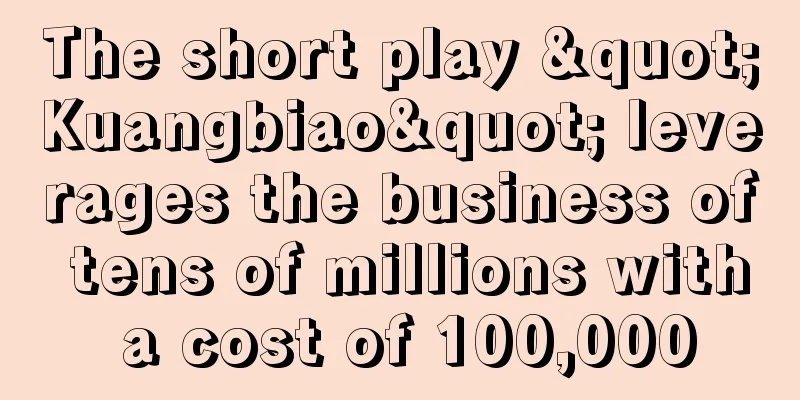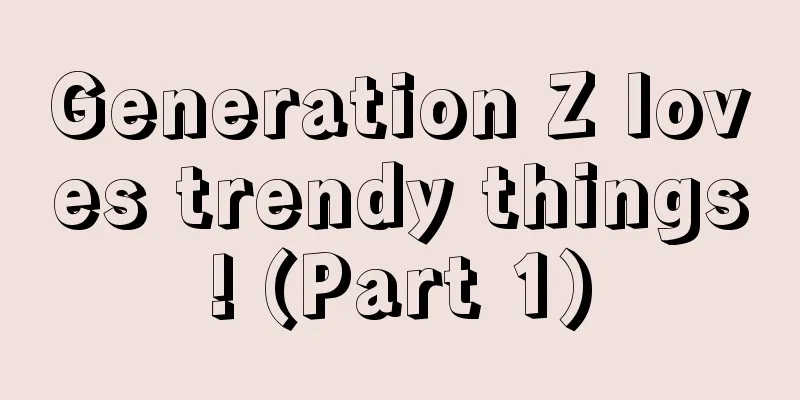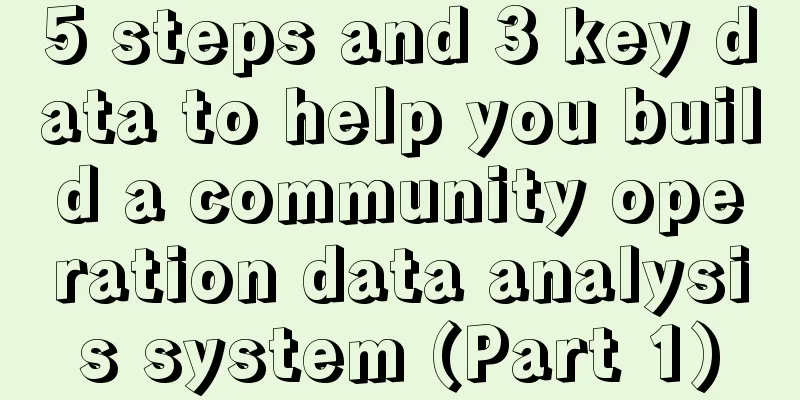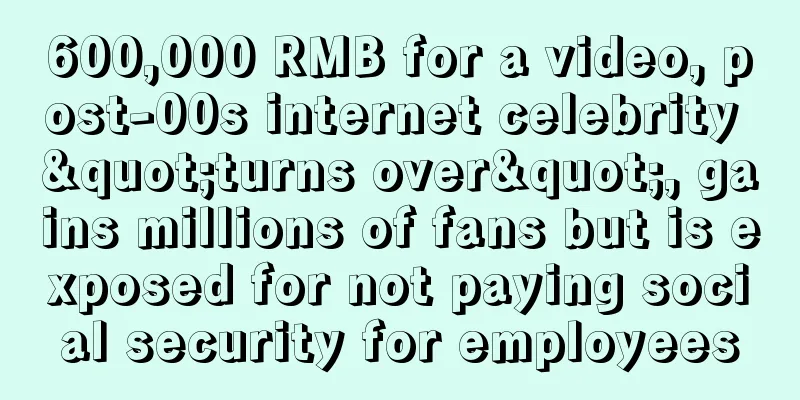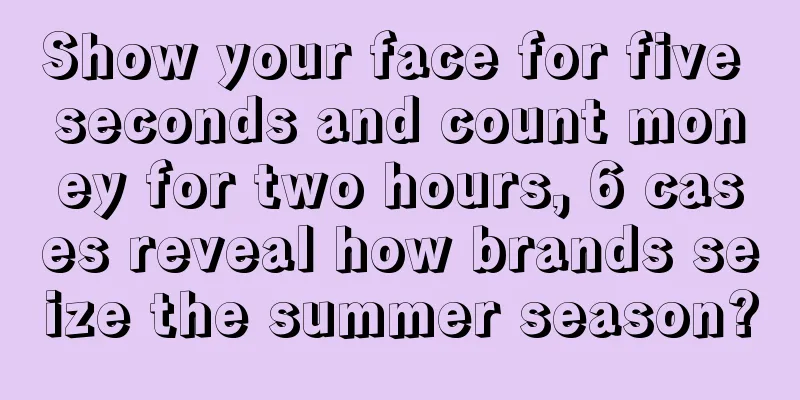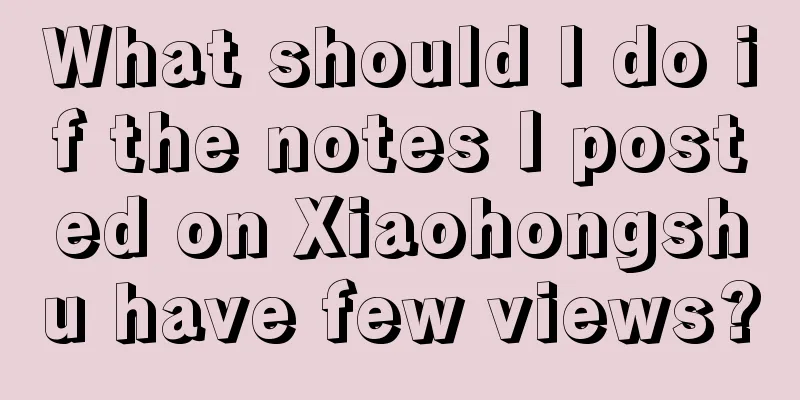Survival advice for marketers in 2024

In the first week of work, let’s talk about a topic that is not easy: This year, many people in the market have felt the pressure and anxiety about survival in the workplace. Internally, we face the business and bosses who are eager for results and output, as well as the uncertainties brought about by budget cuts and changes in pace:
Externally, marketing itself faces a situation of internal traffic, fierce competition, and insufficient demand. It is not easy to maintain flexibility in actions, ensure results, and create brand influence at the same time. Faced with complex and difficult situations, marketers must not only “build a temple in a snail shell” within the limited resource pool, but also continuously improve their core survival capabilities in the process. How to do it? This article, based on our practice, gives you some practical suggestions:
1. Product FocusHow can we make marketing work with minimal effort and achieve great results with extremely limited budget? The answer is: go back to the starting point of 4P - product . For marketers, taking products as the focus and core point of marketing has a natural advantage in user insights; under the current situation of tight resources, there are also more opportunities to escape the traffic dilemma and find new opportunities to overtake others. Here, I would like to introduce two ways to combine product design and marketing innovation, namely concept innovation and product combination . 1. Concept innovationPlease note that the "concept innovation" here does not mean creating a new concept out of thin air, but providing a new solution based on existing problems or existing consensus. Here are two " product concept formulas " to help you improve marketing efficiency by redefining product concepts to make them more attractive and more convertible: 1) “Basic human needs” + products That is, to bundle the most basic human needs (safety, health, certainty, etc.) with products. For example, the word "safety" was added before the Bull socket, turning it into " Bull safety socket ", which means "more reassuring than ordinary sockets." The words " large screen to protect eyes " were added in front of the Xiaodu learning machine to highlight the health attributes of the product and differentiate it from other similar products. There was a community coffee shop that sold over a thousand cups of coffee a day after it opened, and it was named “ 9.9 Coffee ,” directly embedding the certainty of the price in the brand name. Don’t underestimate this simple concept of “the bottom layer of human nature”. In an era when the media environment is becoming more and more fragmented and content is increasing, people don’t have the time and patience to think about it one by one. Instead, the bottom layer of needs can grab people’s attention and interest at the first time. Directly linking needs with product concepts can allow users to immediately obtain key information from product concepts, greatly improving communication efficiency. 2) "Big Pain Points" + Products That is, extract the pain points of a group of people and turn them into a new product concept. For example, in the women's underwear market, East Asian girls with larger cup sizes have an unspeakable pain point: they are not satisfied with their relatively plump figures, but instead want their "big breasts to look smaller" - brands such as Naitangpai and Xia have seized on this pain point and directly designed special "small and slim" underwear. Note that the "big pain point" here must have a large population base and a general consensus. This premise determines that there is no need to pay too much market education cost. Kiehl's launched a moisturizing stick to address the problem of makeup sticking, which is also a major pain point. Dry skin is prone to makeup sticking. The previous solution was to add an extra layer of primer or choose a lighter and more moisturizing cream, but the moisturizing stick combines the effects of both and is easier to carry and apply. The moisturizing stick can solve the pain point of "makeup sticking" more quickly and conveniently, so it quickly gained recognition from the market and users. 2. Product portfolioIt means providing users with new solutions by recombining products. The most classic case is PROYA’s early C and late A. The concept of "a group of coffee" is popular in today's boutique coffee shops. They focus on a type of boutique beans and offer a combination of "American coffee + milk coffee + hand-brewed special blend", providing three flavors at a time, which also means a combination. The product portfolio can not only attract new attention and interest, but also increase the average order value and thus improve ROI. The key point of combination is to establish the rationality of mutual connection and matching, and this rationality is rooted in the consensus deep in the hearts of users. Morning c and evening a, that is, using different skin care products in the morning and evening respectively. The rationale lies in: the public has already been educated by "white and black - take white tablets during the day and black tablets at night", this concept is not fabricated out of thin air, but built on the existing mental foundation. Another example is Tims, whose main breakfast item is the combination of "coffee + bagel". According to the store staff, this combination accounts for more than 50% of the store's revenue. The combination of "dry food + beverage" for breakfast is not created out of thin air, but is an inherent dining habit of people. Therefore, designing a product portfolio usually includes three steps:
2. Anti-funnel thinkingThe logic of marketing is undergoing a transformation from funnel to anti-funnel . In an era when media is relatively single and competition for attention is not so fierce, marketing is mainly carried out through the funnel of "exposure" - "cognition" - "interest" - "conversion" to achieve layer-by-layer conversion. Now, traffic prices are getting more and more expensive, and with the intensification of competition, the link from "exposure" to "conversion" is not so natural. In order to avoid risks and ensure results, more brands (especially small and medium-sized or start-up ones) are more suitable to adopt the " reverse funnel model ", that is, first run through the minimum business closed loop model, and then expand the crowd layer by layer to continuously expand the plate. 1. The smallest unit of commercial closed loopYou can first try to create your own small closed loop: lock in precise groups of people to comprehensively check the conversion efficiency and whether the ROI is positive, and verify whether the basic business and profit model is established. In terms of channel selection for the smallest closed loop, Xiaohongshu is suitable for non-well-known brands, new categories, and products that require a high level of market education; Douyin is suitable for new products with low average order value or from well-known brands; and private domains are suitable for products with a high degree of personalization. 2. Explore people and points of interestOnce the minimum closed loop is established, we can then explore selling points and channel combinations for different groups of people to seek the possibility of expanding the user base. Note that during the stage of exploring interested groups, you need to maintain a high frequency of communication with users to understand their real motivations. User reviews, surveys, focus groups, social platform interactions, etc. are all common methods. After getting real feedback from users, continue to optimize product details and selling point packaging. 3. Form a certain cognitionAt the third level of the funnel, we need to make more users have a certain understanding of the brand and products. Usually, we can focus on the most widespread pain points and interest points to define the core capabilities of the product, and extend the product SKU to match the diverse needs of different groups of people. 4. Large exposure creates a moat effectBased on the establishment of a positive profit loop and user awareness, it is necessary to break the circle through large-scale exposure to achieve greater growth and consolidate market position to form a moat. Note that for high-net-worth products, in addition to wide exposure , a big stage is also needed: building trust through the media itself, which is the concept of "waste" : appearing in high-authority, high-halo media, and being tied to well-known big IPs, the subtext conveyed to consumers is: the brand is strong and the product is guaranteed. Gujia Home Furnishing cooperates with Hangzhou Asian Games When taking the “reverse funnel model” step by step, you also need to pay attention to two points: 1. Create a “brand dark thread” from day oneThe reverse funnel approach makes it easy for people to have this idea: they can do performance marketing first, and when they reach the level of awareness and exposure, they can then work on branding. In fact, this is a rather dangerous idea : without the support of brand stories and values, the foundation of product services will be extremely unreliable in the process of breaking the circle - there is a lack of users' true recognition of its "rationality" (although they have already purchased it). Huaxizi's failure is a typical case. Therefore, from the first day, we should attach importance to the construction of brand hidden lines , tell stories to users and the public, convey values, and shape the legitimacy of brand existence. 2. Maintain high standards of promotion efficiencyWhen penetrating into a larger population, the ROI will definitely be lower compared to the initial stage due to the need to pay for market education costs. However, in this process, we still need to maintain a relatively high promotion efficiency. There are two methods for reference: 1) Refined operations by population Establish different marketing plans and budget monitoring systems according to the type of population: one part is focused on acquiring core users to continuously increase ROI; the other part is used to expand new users and expose them to a larger circle, and the requirements can be appropriately lowered. 2) Combination of different profit products If cash flow is tight, during the period of breaking the circle, you can balance investment and returns by setting up products in different price ranges, for example, launching high-value and high-profit products to old users. 3. Light narrative abilityBefore this year's Spring Festival, Ele.me's subway posters sparked heated discussions in the marketing circle. Some people compared it with Meituan’s big-budget commercials of the same period and believed that the former had a much higher cost-effectiveness: the materials were lighter, the cost was lower, and the communication media was more diverse. In the current fragmented communication environment, it was a typical example of “spending little money to achieve great things.” For brand people or creative people, faced with the current situation of tightening budgets, scattered communication channels, and fleeting hot spots, they must master the communication method of "light narrative". The first step to light narrative is to unload the burden , that is, to keep only the important parts by weighing the pros and cons. 1. Use fewer audiences to achieve more distinct attitudes and communication tensionFor a brand that is in the start-up phase from 0 to 1, it is often more effective to abandon some consumers and clearly express its stance and "stand in line" in communication ideas and event planning. Tourism New Zealand, for example, “chose to forgo 90 per cent of its potential target audience in order to focus on a particular type of traveller”. When the Tourism Board surveyed tourists who were about to leave New Zealand, it found that those who enjoyed their trip the most were those who drove their cars or RVs to explore. Therefore, they decided to focus on those "exploration-loving" travelers, who only accounted for 10%-15% of the total number of tourists, but were willing to actively participate in exploration and enjoy their experience in New Zealand more. Therefore, whether it is external promotion advertising or designing tourist routes, the New Zealand Tourism Board focuses on self-driving, self-guided travel and daring adventurous tourists, which has formed a distinctive travel style and attracted adventurers from all over the world. 2. Use more controversial expressions to promote the brandEle.me mentioned above is a typical case. The slogan “ I wish you don’t have to use Ele.me during the Chinese New Year ” goes against common sense and is likely to cause internal and external controversy, thus bringing about a wave of heated discussions and quickly going viral. Controversial expressions are inherently popular, but they also involve some risks. From our practice, if the expression is in line with the current social and cultural trends, there will not be too many problems. For example, "plus-size models" are in line with the new trend of "eliminating body anxiety"; the movie "Annual Meetings Can't Stop" conforms to the workplace proposition of "anti-involution, anti-workplace PUA". There are two more tips for implementation regarding “light narrative”: First, we need to understand the characteristics of materials that are suitable for light storytelling on different platforms:
Second, be good at utilizing the exclusive resources of your own brand The ingenious design of the outer packaging of fast-moving consumer goods (such as Mengniu’s college entrance examination topic-predicting milk), the use of signs, labels and other materials in offline stores (RT-Mart’s vegetable copywriting, IKEA’s dialect advertisements...), the children’s poetry receipts on UnionPay POS machines and Meituan’s riders’ rabbit ears are also vivid examples of using the brand’s native resources for communication. Finally, please remember: light narrative is not about throwing a handful of light confetti into the air, nor is it about arbitrarily designing messy and complicated content. It is like flying a kite . It seems very light and floats randomly, but there is a line firmly in your hand. This line is the brand's main narrative - all communications must be firmly bound to the brand's core values, form a consistent memory, and continuously accumulate brand assets. 4. Boldly crossing the line and cultivating inner strengthIn the first three parts, we mainly talk about survival methods at the business level; and in the last part, let us focus on the human thinking and ability level. From my experiences and practices along the way, I believe that the two most important things for marketers today are "crossing the line" and "cultivation". 1. Go beyond the boundariesDon't limit your work scope to the "marketing field" . As the boundaries of marketing become increasingly blurred: upstream, you can participate in product definition to achieve marketing innovation, and downstream, you can go deep into channels to close the marketing loop. Even in smaller business units or their own entrepreneurial or sideline projects, marketers can take control of the entire business, experience and polish each link, and thus empower marketing throughout the entire chain. Here, you must have the mentality of "working for yourself" . The most important thing you gain from doing marketing work is "the sense and ability to build brands and marketing" , which can support and empower the entire business model. Once we learn to "cross the line" and dare to "cross the line", it means that we have the deepest confidence: we can also close the business loop ourselves, rather than just being responsible for the "spending money" part. 2. Internal cultivationAs a marketer who has been working on the front line for more than 10 years, I believe that the most important sense of security for marketers comes from "calmly responding to the changes and constants in marketing." What is changing is the ever-evolving communication methods and channels, especially in the era of the Internet and AI, which are changing with each passing day. What remains unchanged is the understanding of human nature, the underlying logic of brand marketing, and the insight into the changing trends in consumer psychology. These will not change with changes in traffic, but instead become clever weapons for using traffic. As for the "change" part, I suggest that you learn and practice in actual combat, boldly enter a platform that you are not familiar with, and learn by doing; As for the “unchanged” part, we recommend: First, master the systematic logical structure and truly understand the underlying methods of branding and marketing, rather than chaotic and fragmented learning. Second, understand your users. Quoting Zhang Xiaolong’s point of view, he believes that the most effective way to understand user needs is to “feel the user’s trend” . “The so-called trend refers to different user groups and what they like to do… These are global feelings. It is very important to feel this trend, otherwise you will not have a clear perception of the overall user.” That’s all for today. I wish all my market colleagues to keep a stable mentality in 2024, move forward calmly, constantly open up new spaces and have new possibilities. Author: Lan Lan Source: WeChat public account "Taro and Cat Talk (ID: taro_cat)" |
<<: In 2024, the Internet and consumer brands that flock to the sinking market
>>: 2024, learn to be a big fish in a small market!
Recommend
What are the cross-border e-commerce platforms in China? How to choose?
Nowadays, you need to find a suitable platform to ...
Black Myth: Wukong dominated the screen for a day
"Black Myth: Wukong" exploded the entire...
30 articles with 100,000+ hits in a month, 8 methods to collect effective hot content materials
Are you a student working in self-media often worr...
Which site is better for cross-border shopping on Shopee? Any recommendations?
Shopee's cross-border e-commerce platform is c...
It’s not easy for Meituan to become an outdoor media company | Outdoor Advertising Observation
The creation and operation of ladder media has alw...
What are the conditions for opening a cross-border e-commerce store? What abilities do individuals need to engage in cross-border e-commerce?
Competition in the domestic e-commerce industry is...
What is the Shopee Singapore 55 Big Promotion? Detailed introduction
There are 7 days left to register for the 4.25 cou...
The golden rule of KOL marketing: How to create multi-platform breakthrough communication?
How to achieve accurate communication on multiple ...
Is it difficult to convert existing users into new ones at low cost?
In the stock era, when traffic is scarce, is it di...
Summary of illegal words and illegal behaviors on Douyin
When creating an account on a platform, the most f...
Interpretation of Xiaohongshu’s important new features!
Xiaohongshu’s spotlight platform has added three n...
Without investing in influencers, how can brands cold-start on Xiaohongshu?
How can brands do a cold start on Xiaohongshu? Wha...
Video number, a little tangled
With the launch of the Douyin chat software, Douyi...
iQiyi, Youku and Tencent compete to create hit products and make online literature IP popular again?
Yuewen Group has once again set off a wave of cult...
How to get the URL address of Amazon images? How to save images?
On the Amazon shopping platform, sometimes we need...
